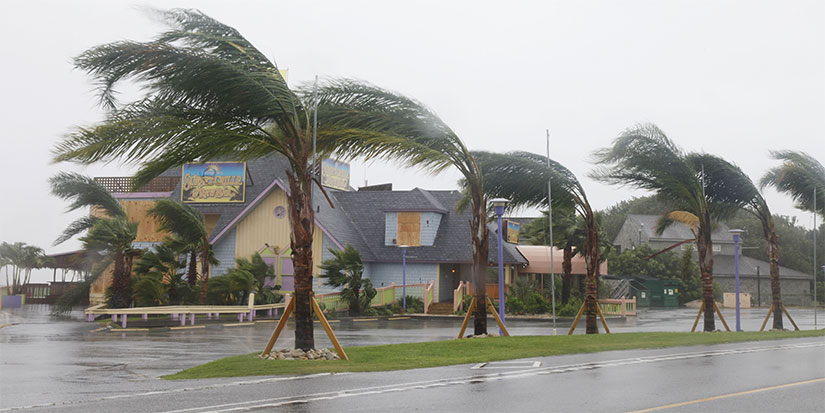
Catastrophe Bonds—Are They Worth the Risk?
-
 Thompson Clark
Thompson Clark
- |
- Smart Money Monday
- |
- September 11, 2023
So far this year, a relatively small market is having one of its best years on record.
Despite all the hurricanes, fires, floods, and other catastrophic events, these unique assets with unique payout structures are performing well.
I’m talking about catastrophe bonds, or “cat bonds” as they’re called in the industry.
Basically, a cat bond is a somewhat plain-vanilla bond. That is, investors loan money to a company or entity (or whomever) with the expectation of getting paid interest plus their principal at some point in the future.
In the case of a cat bond, the payout structure is simple—and today, I’ve found a way to “play” cat bonds by tapping into an insurance company that I believe makes for a great long-term hold.
Markets in Everything
So, how do cat bonds work? Let’s break it down…
Investors who buy a cat bond put, say, $100 million in an account. That money is then invested in short-duration, risk-free government securities. The investors get that cash interest.
Here’s where things get interesting: In addition to collecting risk-free money (around 5% or so today), they also get paid a premium, which is quoted like an interest rate.
For example, investors who purchase the Four Lakes Re Ltd. cat bond due 1/5/2024 are getting 10.16% on top of the three-month Treasury for their capital.
So, the headline return potential—over 15%—is pretty attractive for a bond.
And the bond is unique. It’s not tied to the performance of a company or real estate. It’s tied specifically to a certain event.
The Risks
However, there are risks. Big ones. Cat bond issuers are typically insurance companies. These insurance companies need the cat bond market to lay off certain risks they don’t want to take.
It may come as a surprise to some, but insurance companies rarely carry 100% of the risk they’ve assumed by writing insurance policies.
For example, an insurer insuring against a hurricane in Florida may not have a large enough balance sheet to take on billions and billions of potential risk.
Using simple math, they collect $10,000 in premiums from a homeowner… but then they buy insurance themselves for, say, $3,000.
Like what you're reading?
Get this free newsletter in your inbox every Monday! Read our privacy policy here.
Sometimes, though, insurance companies can’t buy the insurance they want. That’s where the cat bond comes into play.
A cat bond looks like an insurance policy. It has certain triggers in the bond document that lead to a payoff. For example, there are some cat bonds that only pay out if a hurricane has recorded wind speeds over 150 mph. Or it only pays out if total damages exceed a certain dollar figure.
It’s a fascinating structure that truly proves there are markets in nearly everything.
So, what are the risks?
An investor in a cat bond is making the bet that the triggers won’t be met. If they are, well, their principal will take a haircut.
The Integrity Re 2019‒1 cat bond was tied to Hurricane Ian, the devasting Category 5 hurricane that hit the United States in September 2022. According to insurance experts at Artemis (artemis.bm), the expectation is that this bond will face a 10%–30% loss of principal.
The returns on paper looked juicy… assuming nothing went wrong. But as we can see with this particular bond, it doesn’t always work that way.
|
Navigating the financial landscape with John Mauldin: In a world of economic uncertainty, the strength of your financial strategy holds the key to your future stability. Whether we're facing a recession, a potential soft landing, or even the specter of a market crash, the decisions you make today will shape your financial destiny. Click here for more details. |
Cat Bond Performance
Year to date, cat bonds as an asset class have performed well. Swiss Re, a large reinsurance company, puts together a cat bond index that tracks performance of the whole sector.
And this year, the market is hot. Through August, the index is up over 14%. That’s not bad for a fixed-income instrument.
The reason for the strong returns is a function of a handful of storms and other catastrophes over the past few years. Hurricane Ian likely had total insurance losses north of $13 billion. This wiped out a ton of capital in the sector—both in cat bonds and on insurance companies’ balance sheets.
This destruction of capital really softened investors’ appetite for cat bonds. In other words, for investors to be enticed to buy cat bonds, they required a higher payout—hence the higher return.
How to Act
There are a handful of ways to “play” cat bonds. The asset is truly unique in that it is entirely uncorrelated to the overall market. The economy could go into recession—a major one at that—and a cat bond will continue to pay out to investors. The bond simply isn’t tied to anything but a particular catastrophic event.
Investment fund Amundi recently created a cat bond mutual fund, the Pioneer CAT Bond Fund. You can buy the fund through Fidelity. The Class Y shares trade under ticker CBYYX.
It holds a basket of cat bonds that tie the fund to catastrophes like Florida hurricanes, Texas hurricanes, and California earthquakes.
I’m not making a recommendation to buy the fund, but if you wanted to own something truly uncorrelated, that’s one way to do it.
Like what you're reading?
Get this free newsletter in your inbox every Monday! Read our privacy policy here.
I’ve written quite a bit about my favorite insurance company, Fairfax Financial Holdings (FRFHF). It has done well this year—up over 40%.
The company is led by Prem Watsa, who some call the Warren Buffett of Canada. Prem and his team have done a great job managing the balance sheet and sitting on cash while everyone else bought long-duration bonds.
Now that interest rates have risen, Fairfax is earning juicy returns on short-duration, risk-free government paper.
In addition, the insurance market is still in what’s called a “hard” market. A hard market means insurance companies can increase premiums without much pushback. There are few insurance companies willing to write certain risks right now. So, the ones that are can price it however they want.
The hard market has been going on for a little while now—again, because of a bunch of catastrophic storms and wildfires—but it won’t last forever.
Fairfax is capitalizing on this situation and making a ton of money in the process.
I think it’s a great long-term hold.
Thanks for reading,

—Thompson Clark
Editor, Smart Money Monday

 Thompson Clark
Thompson Clark
